Car Dashboard Symbols Exclamation Point: A Guide!
When a car dashboard displays a symbol resembling an exclamation point, often inside a circle or parentheses, it indicates a warning related to the vehicle’s braking system or tire pressure issues.
This alert is designed to draw your attention to potential safety concerns that require immediate attention.
The exclamation point symbol on a car dashboard is not a generic warning; it usually specifies one of the following issues:
- Brake System Warning: This could mean there’s a problem with the anti-lock brakes, there’s low brake fluid, or there’s an issue with the brake pads. It’s important to check your vehicle’s manual for precise meanings.
- Tire Pressure Warning: If the exclamation point is inside a horseshoe-like shape, it suggests that one or more of your tires are significantly under-inflated, which could lead to unsafe driving conditions.
Common scenarios that might trigger the exclamation point warning include:
- A sudden drop in tire pressure due to a puncture.
- Decreasing temperatures causing a drop in tire pressure.
- Brake fluid level falling below the recommended threshold due to a leak or brake pad wear.
Seeing an exclamation point on your dashboard should never be ignored, as it signifies critical information about your vehicle’s safety and operability, warranting a prompt inspection or service.
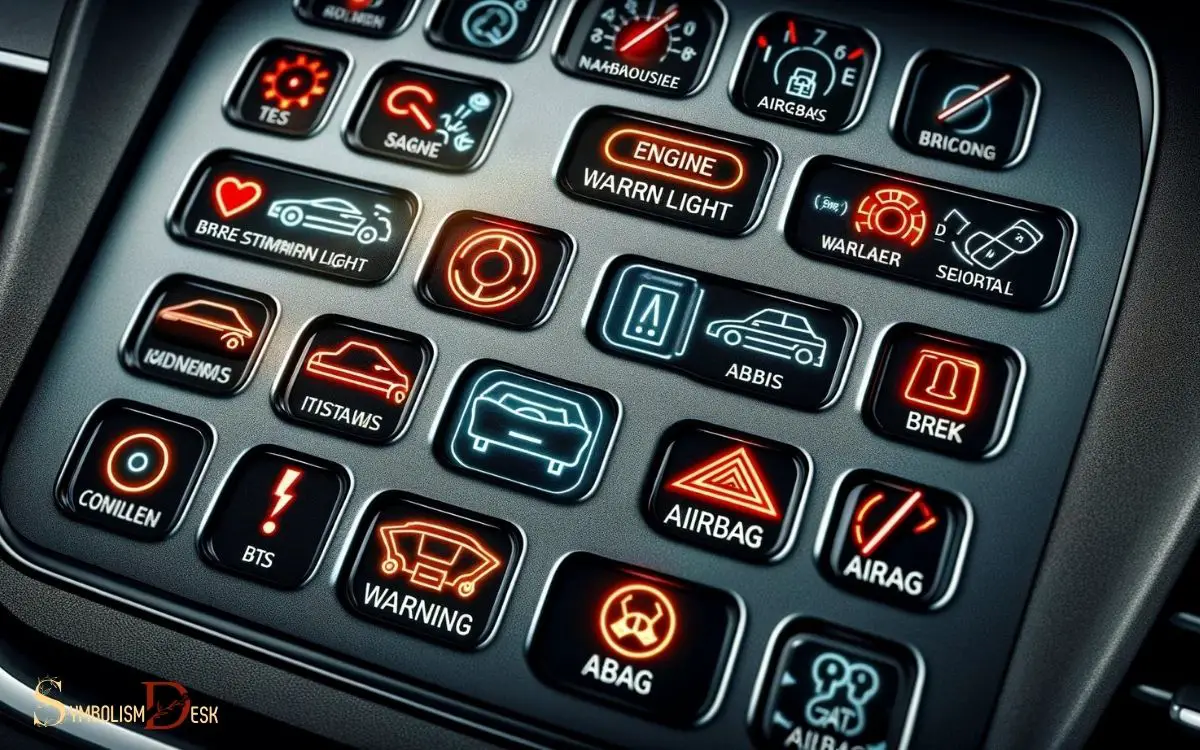
Key Takeaway
Common Exclamation Point Symbols
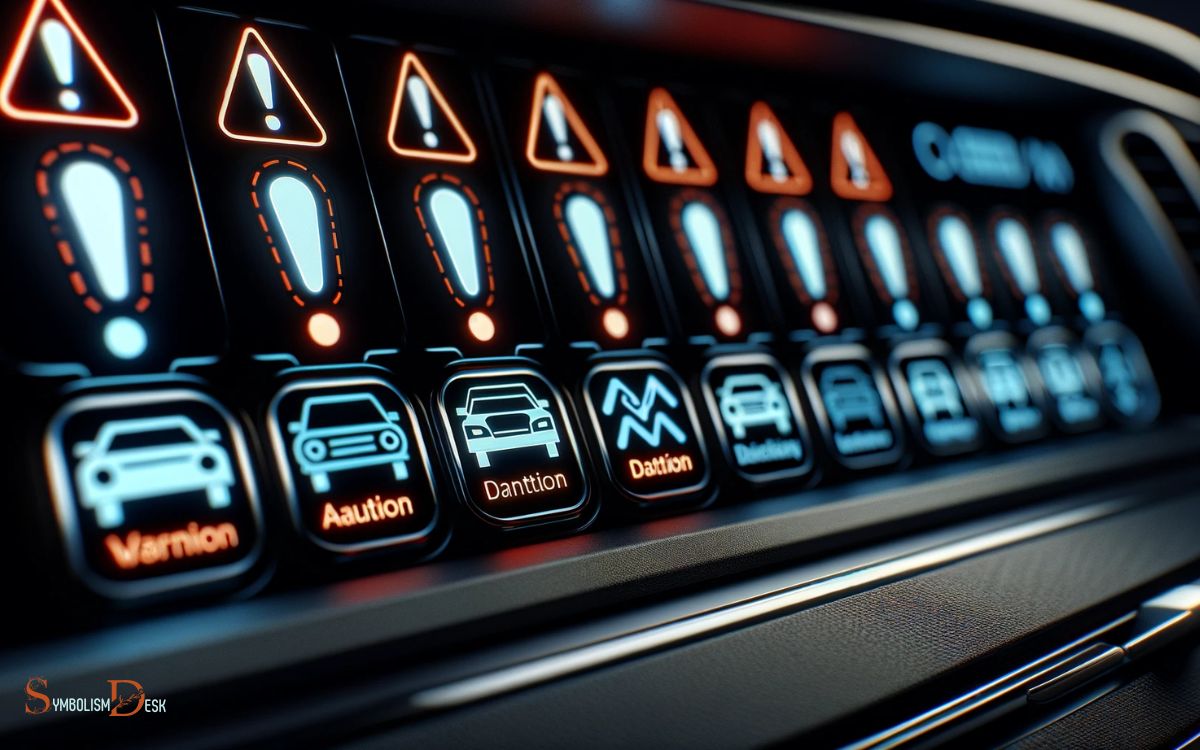
The exclamation point symbol on the car dashboard typically indicates a critical issue that requires immediate attention. One common exclamation point symbol is related to the tire pressure monitoring system (TPMS).
When this light illuminates, it suggests that one or more tires may be significantly underinflated, potentially compromising vehicle safety and performance.
Another important symbol is the brake system warning light, which could indicate issues such as low brake fluid or a problem with the anti-lock braking system (ABS).
Additionally, the exclamation point within a circle often signifies a malfunction in the vehicle’s electronic stability control (ESC) system, which is designed to enhance stability and prevent skidding.
Understanding these common exclamation point symbols is crucial for prompt and appropriate action to address potential safety concerns.
Understanding the Warning Lights
Understanding the Warning Lights is crucial for drivers to promptly address potential safety concerns, continuing from the previous discussion of common exclamation point symbols on the car dashboard.
When these warning lights illuminate, it’s important for drivers to interpret the signals correctly.
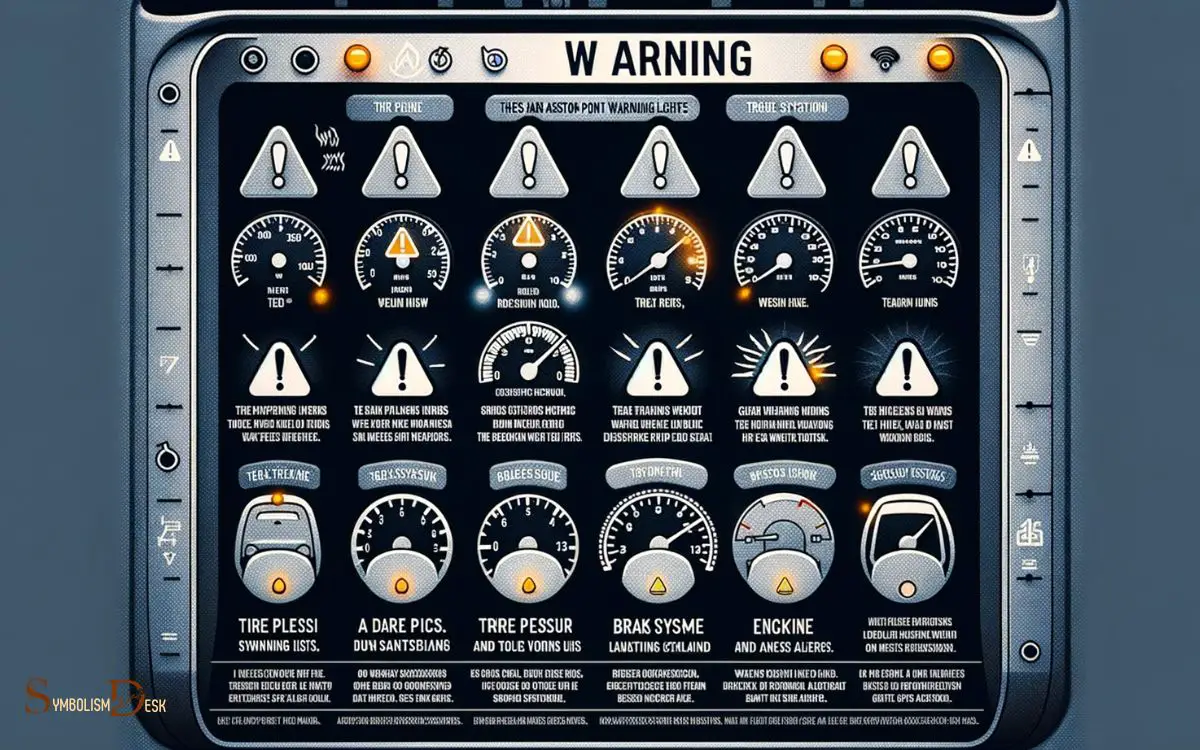
Here are some key points to consider:
- Color: Different warning lights may be different colors, with each color indicating the severity of the issue.
- Flashing vs. Solid: A flashing warning light typically signifies a more urgent problem compared to a solid light.
- Icon: The symbol displayed can provide clues about the specific system or component that requires attention.
Potential Causes of Exclamation Point
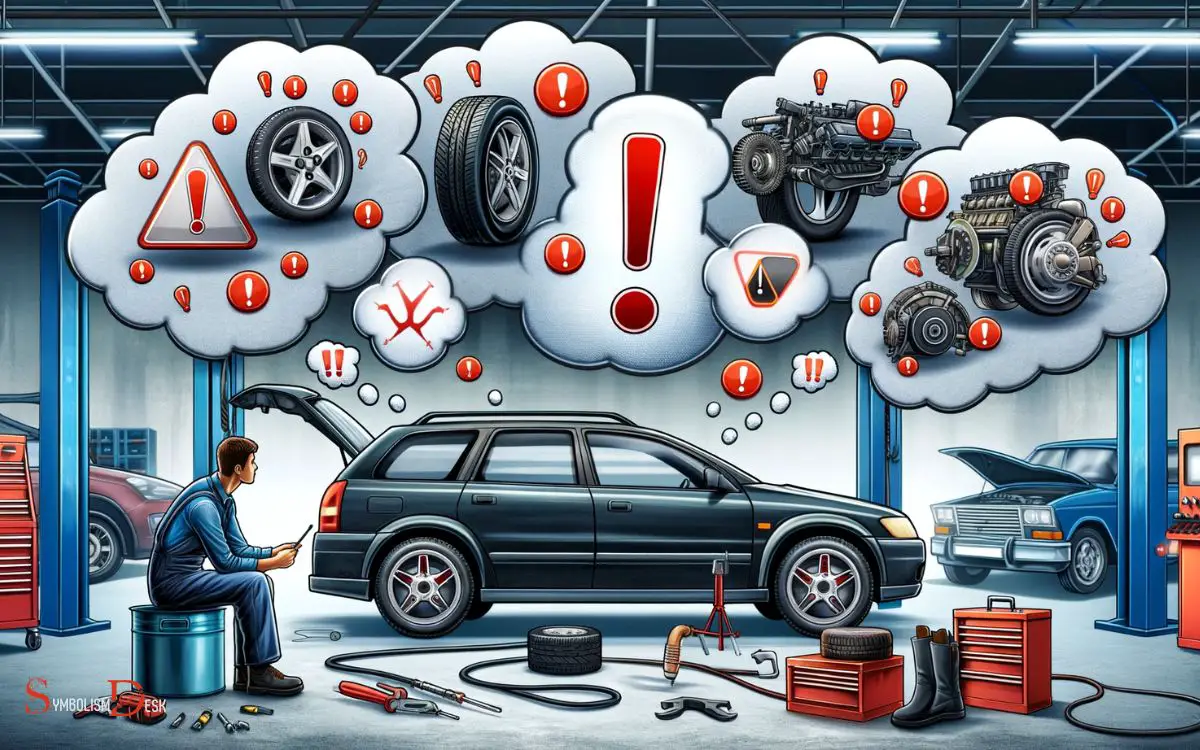
When an exclamation point symbol appears on the car dashboard, there are several potential causes that drivers should be aware of, including issues with the brake system, tire pressure, and electronic stability control.
The exclamation point light could indicate a problem with the brake system, such as worn brake pads or low brake fluid. Additionally, it may signal low tire pressure, which can affect vehicle handling and fuel efficiency.
Another potential cause is a malfunction in the electronic stability control system, which helps maintain control during sudden maneuvers. It’s important for drivers to address the exclamation point symbol promptly to prevent potential safety hazards.
If the light illuminates, it’s advisable to consult the vehicle’s manual and seek professional assistance to diagnose and resolve the issue.
Immediate Actions to Take
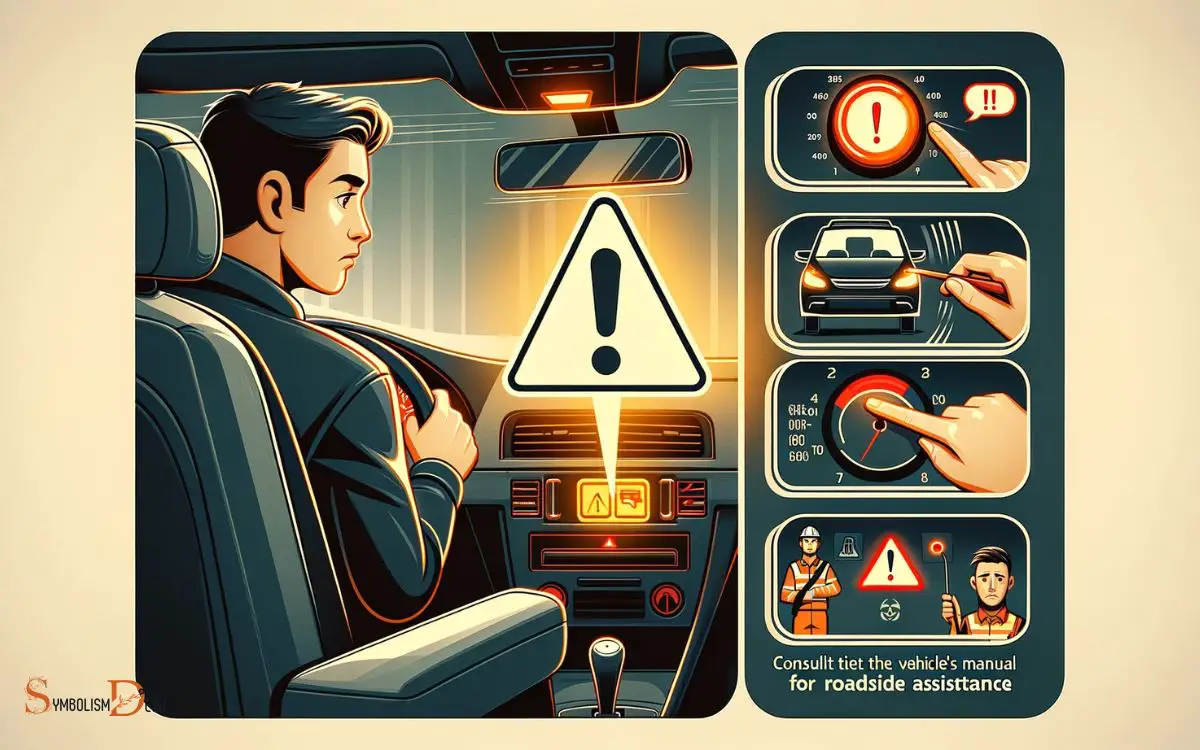
Upon seeing the exclamation point symbol on the car dashboard, drivers should immediately check the brake system, tire pressure, and electronic stability control to ensure safe operation of the vehicle.
- Check the brake system for any signs of malfunction such as low brake fluid or worn brake pads.
- Verify the tire pressure in all tires, including the spare, to ensure they are within the recommended range.
- Ensure the electronic stability control system is functioning properly by checking for any warning lights or messages on the dashboard display.
Taking these immediate actions can help identify and address potential issues that could compromise the safety and performance of the vehicle.
If any concerns are identified during these checks, it is advisable to promptly seek professional assistance to address the underlying problems.
Preventive Maintenance Tips
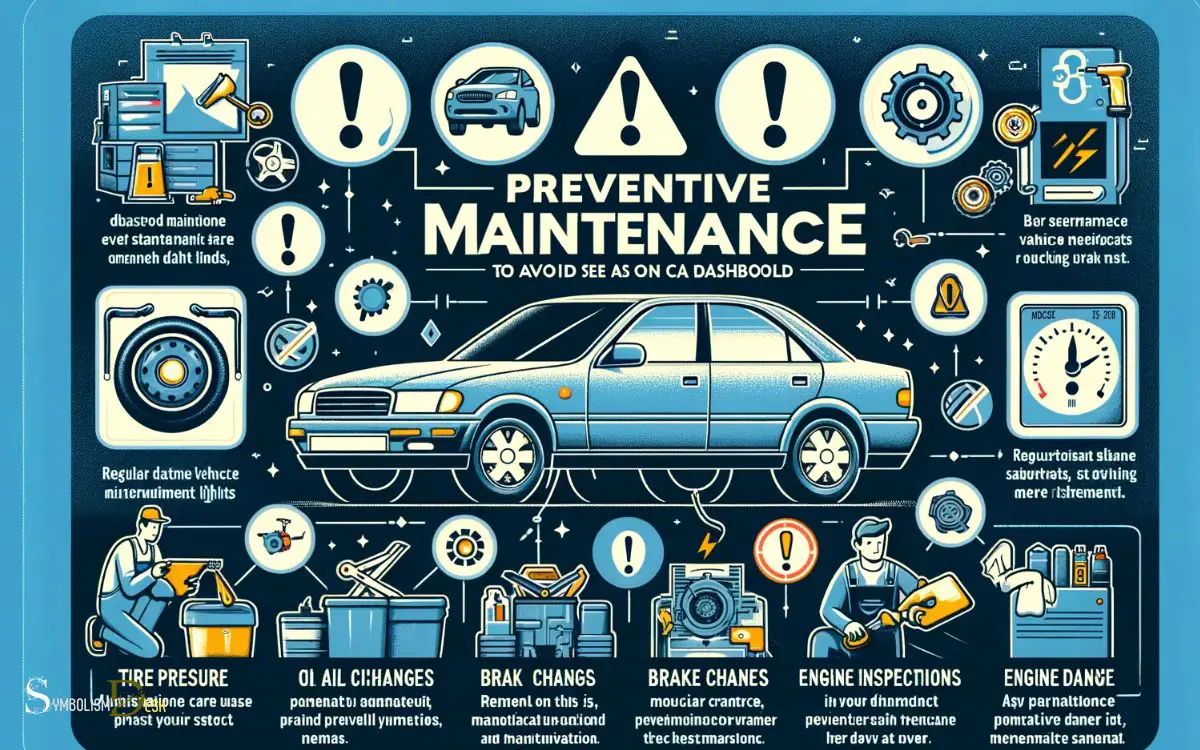
Regularly inspecting and maintaining key vehicle components can help prevent potential issues indicated by the exclamation point symbol on the car dashboard.
To avoid this warning light, drivers should ensure that the brake system is routinely checked for wear and tear, including brake pads, rotors, and fluid levels. Additionally, keeping an eye on tire pressure and tread depth can prevent potential blowouts or loss of traction.
Regular oil changes and engine tune-ups are essential to preventing engine-related problems. Maintaining proper fluid levels, such as coolant and transmission fluid, can also help prevent overheating and transmission issues.
Lastly, inspecting the vehicle’s suspension system, including shocks and struts, can help prevent potential handling and stability issues.
By staying proactive with these preventive maintenance measures, drivers can mitigate the likelihood of encountering problems indicated by the dashboard exclamation point symbol.
Conclusion
Understanding the exclamation point symbols on your car dashboard is crucial for maintaining vehicle safety. These warning lights are designed to alert drivers to potential issues or necessary maintenance, ensuring that problems are addressed before they worsen. By taking the time to familiarize yourself with car dashboard symbols explained in your vehicle’s manual, you can quickly identify what each light means and respond appropriately. Ignoring these indicators could lead to costly repairs or even dangerous driving conditions.
According to a recent study by AAA, 20% of drivers are unable to identify the meaning of common dashboard warning lights, including the exclamation point symbol.
By familiarizing yourself with these warning lights and taking immediate action when they appear, you can prevent potential issues and ensure the longevity of your vehicle.






